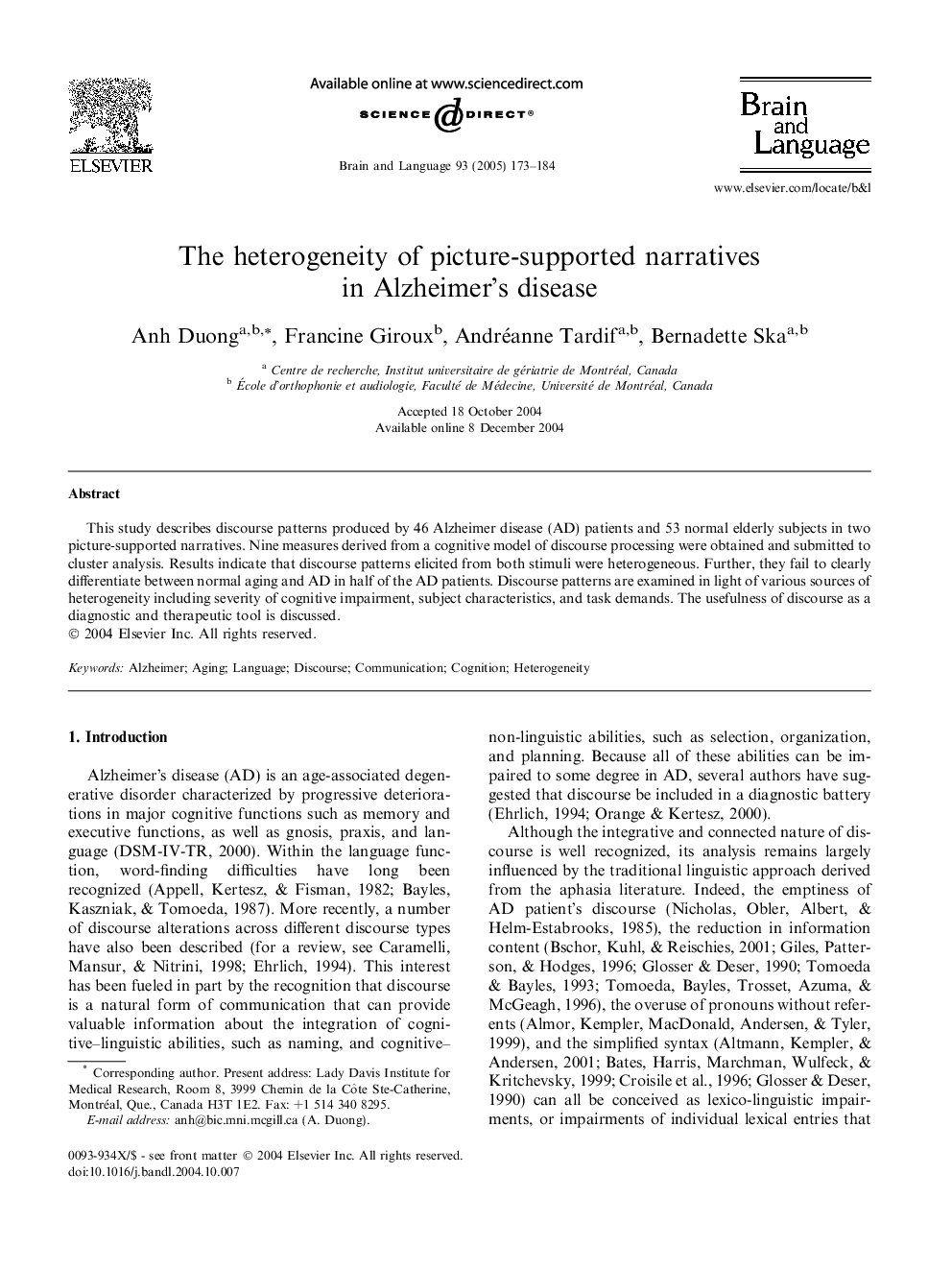| Article ID | Journal | Published Year | Pages | File Type |
|---|---|---|---|---|
| 10456570 | Brain and Language | 2005 | 12 Pages |
Abstract
This study describes discourse patterns produced by 46 Alzheimer disease (AD) patients and 53 normal elderly subjects in two picture-supported narratives. Nine measures derived from a cognitive model of discourse processing were obtained and submitted to cluster analysis. Results indicate that discourse patterns elicited from both stimuli were heterogeneous. Further, they fail to clearly differentiate between normal aging and AD in half of the AD patients. Discourse patterns are examined in light of various sources of heterogeneity including severity of cognitive impairment, subject characteristics, and task demands. The usefulness of discourse as a diagnostic and therapeutic tool is discussed.
Related Topics
Life Sciences
Neuroscience
Biological Psychiatry
Authors
Anh Duong, Francine Giroux, Andréanne Tardif, Bernadette Ska,
